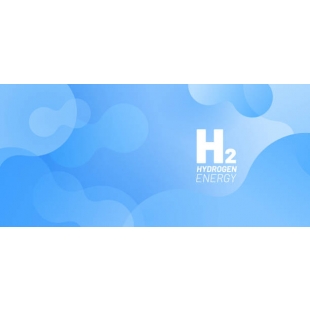Hydrogen Energy
Hydrogen is a clean energy because of its high energy density and pollution-free combustion. The main ways of hydrogen generation are from coal and methane, as well as hydrogen generation from by-products of chemical plants. It had been reported that heavy oil reservoir in Margaret Lake in Canada produced up to 15 mol% hydrogen indicating that it is feasible to produce hydrogen by in-situ gasification (ISG) from heavy oil reservoir. However, there are relatively few studies on the mechanism and characteristics of hydrogen generation from ISG of heavy oil, the lower limit of hydrogen-production temperature, the interaction of produced gas and so on. Previous studies focused on the upgrading of heavy oil rather than hydrogen generation. In order to study the hydrogen generation mechanisms of different samples, The 4 types samples covering heavy oil, light oil, carbon samples were used and the saturate, aromatic, resin and asphaltene (SARA) components was measured by thin layer chromatography and flame ionization detection (TLC-FID). Then, the ramped temperature oxidation (RTO) experiments of 7 Runs of reservoir cores and sand-filling model were designed. The compositions and molar contents of produced gas were analyzed combined with gas chromatography (GC), and the lower limit temperature and the advantages of hydrogen generation from heavy oil were analyzed under different air/nitrogen injection rates based on a constant water injection rate. The results showed that the lower limit temperature of hydrogen generation from crude oil was about 500–550 °C and that of carbon was 700–750 °C. The reservoir core may had catalytic effect, which can promote hydrogen production. The highest hydrogen rate of RTO experiment with reservoir core can reach 55–60mol%, while that of sand-filling experiment was only 5–10mol%. The main chemical reactions for hydrogen generation from crude oil were coke gasification and water-gas shift. Therefore, the hydrogen production of heavy oil with high hydrocarbon ratio was significantly greater than that of thin oil. It showed the advantages of hydrogen generation from heavy oil. In addition, in order to quantitatively evaluate the efficiency of hydrogen production by gasification, the definition and calculation equation of hydrogen generation efficiency (HGE) were given. The HGE was defined as the ratio of hydrogen production volume and hydrogen consumption volume in a certain period of time (Δt). The Ehg can be used to quantitatively represent HGE, and the calculation of Ehg is the ratio of hydrogen production and twice of oxygen consumption in a period of time. The Ehg of Run1 and Run3 were calculated to be 1.47 and 0.15. It indicated that the hydrogen production efficiency of Run1 was about 10 times higher than that of Run3.
The EU's hydrogen strategy explores the potential for renewable hydrogen to help decarbonise the EU in a cost-effective way.
Hydrogen accounts for less than 2% of Europe’s present energy consumption and is primarily used to produce chemical products, such as plastics and fertilisers. 96% of this hydrogen production is through natural gas, resulting in significant amounts of CO2 emissions.
Renewable hydrogen can be obtained via electrolysis using renewable electricity to split water into hydrogen and oxygen. It will play a key role in decarbonising sectors where other alternatives might be unfeasible or more expensive. It can be used to replace fossil-based hydrogen for transport and industrial processes, and to start new industrial products, such as green fertilisers and steel.
When produced at times when solar and wind energy resources are abundantly available, renewable hydrogen can also support the EU’s electricity sector, providing long-term and large-scale storage. The storage potential of hydrogen is particularly beneficial for power grids as it allows for renewable energy to be kept not only in large quantities, but also for long periods of time. This means that hydrogen can help improve the flexibility of energy systems by balancing out supply and demand when there is either too much or not enough power being generated, helping to boost energy efficiency throughout the EU.
EU hydrogen strategy
The EU strategy on hydrogen was adopted in 2020 and put forward a vision for the creation of a European hydrogen ecosystem from research and innovation to scale up production and infrastructure to an international dimension. Hydrogen is also an important part of the EU strategy for energy system integration.
The strategy explored how producing and using renewable hydrogen can help decarbonise the EU economy in a cost-effective way, in line with the European Green Deal, and contribute to the post-COVID-19 economic recovery. It listed 20 action points that were implemented by the first quarter of 2022.




